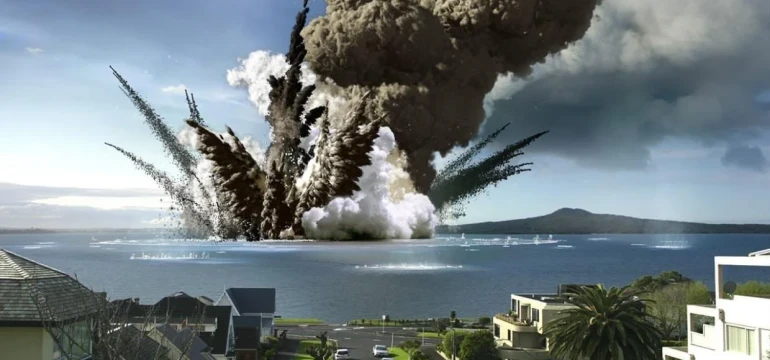Volcanic clouds may travel twice as far in Auckland, new research shows
A volcanic eruption in Auckland could result in clouds of hot, fast-moving gas and debris, known as base surges, travelling much farther than previously thought, and scientists are now working to revise estimates to better plan for future events.

Base surges are one of Auckland’s most deadly volcanic hazards. They form when magma mixes with groundwater creating a low-lying cloud of volcanic gas, ash, and rock that can move at tens of metres per second.
“Based on international research, we think current estimates of how far base surges could travel in Auckland are far too conservative,” says Gemechu Teferi, who is leading the research as part of his PhD with DEVORA (DEtermining VOlcanic Risk in Auckland), a multi-disciplinary programme co-funded by Natural Hazards Commission Toka Tu Ake and Auckland Council.
Research into Ubehebe Craters in California’s Death Valley, a volcanic zone similar to the one found beneath Auckland, found evidence of base surges 10 to 15 km from volcanic vents.
“This is at least two times farther than previous estimates of how far surges can travel, and we want to know if such distances are also possible in the Auckland Volcanic Field,” says Teferi.
The arid environment in Death Valley is excellent at preserving geological evidence that would otherwise be eroded by weather, vegetation, and urban development in places like Auckland.
Auckland Emergency Management’s response plan for a future eruption in the Auckland Volcanic Field has been updated to include the longer surge run out distances, but studies are needed to test whether these can be realistically expected in Auckland.
NHC’s Chief Resilience Officer Dr Jo Horrocks says, “This research has implications for how we plan for future eruptions, as, if confirmed, it means the impacts of a volcanic eruption in Auckland would be potentially far greater than we previously thought.”
At least 42 of Auckland’s 53 volcanoes show evidence of phreatomagmatic eruptions which are known to involve base surges.
Teferi recently visited over 30 of these sites and selected nine which showed the best geologic evidence of base surges for further investigation.
In the coming months, Teferi’s team will analyse rocks from the selected sites using a technique known as AMS (Anisotropy Magnetic Susceptibility) which can pick up microscopic evidence of flow behaviour of past base surges.
Teferi will feed the geological evidence and AMS analysis into a computer model that will estimate the true distance the base surge travelled. He will then simulate possible future base surge scenarios.
The information will support councils, emergency responders, and loss modellers with planning for the impact of future eruptions.
Horrocks says, “Although unlikely, the impact of a volcanic eruption on Auckland is huge and base surges will be one of the biggest hazards. A more accurate estimate of how far these deadly clouds will travel can help councils with evacuation planning and insurers with estimating potential loses.”